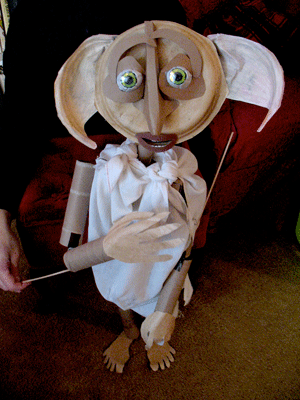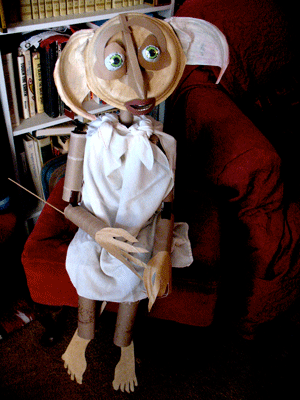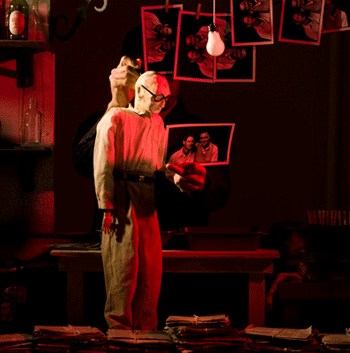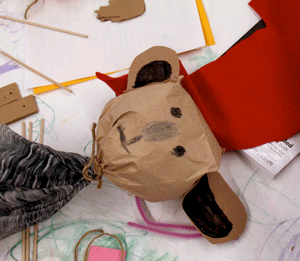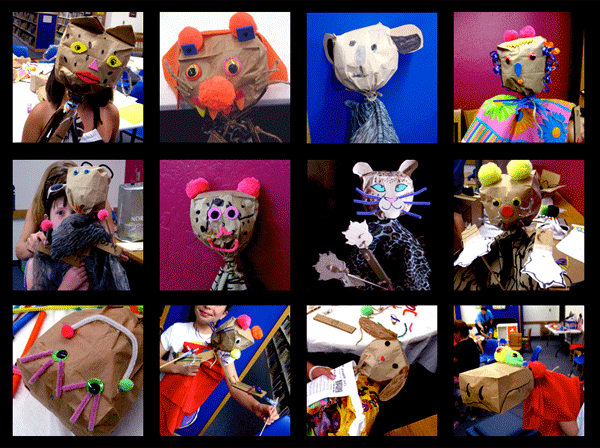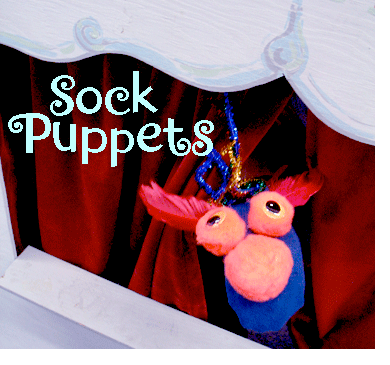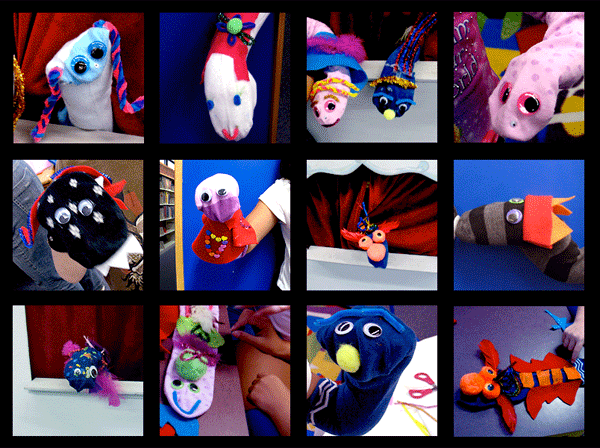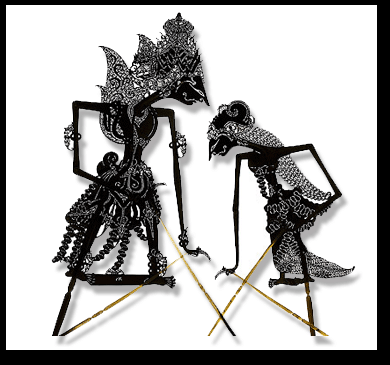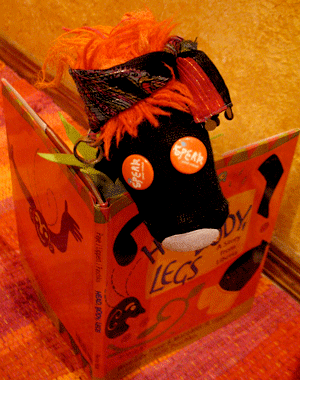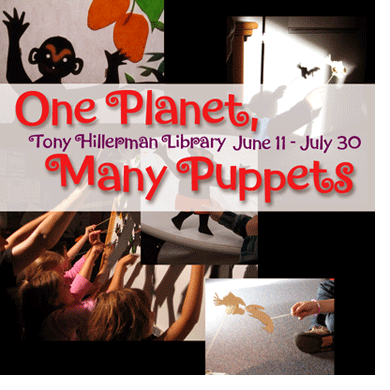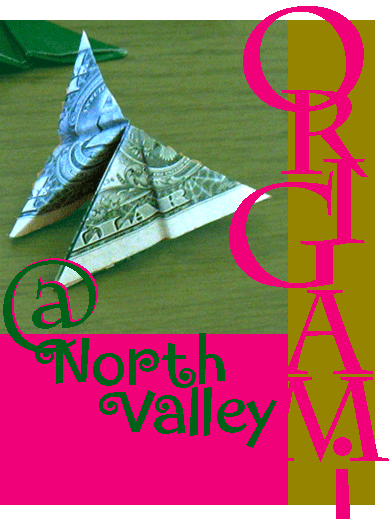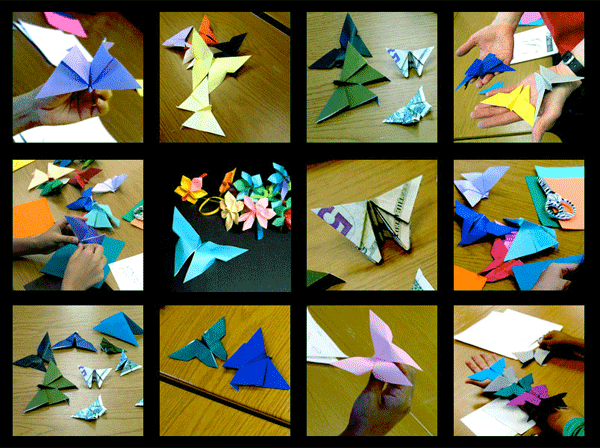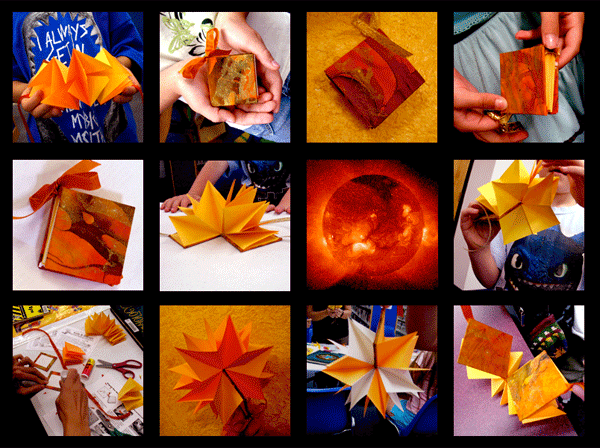 Because our Summer Reading Program theme this year is “One World, Many Stories,” and because the theme of our branch’s SRP kick-off was “Explore the Sun,” I created a shadow puppet play, How Maui Snared the Sun, for our kick-off event.
Because our Summer Reading Program theme this year is “One World, Many Stories,” and because the theme of our branch’s SRP kick-off was “Explore the Sun,” I created a shadow puppet play, How Maui Snared the Sun, for our kick-off event.
I introduced my story with a traditional chant, or mele oli, by Kaumakaiwa Kanaka’ole.
Then I began to tell the story, which I had woven from a number of different Pacific Islands stories about the trickster and culture hero, Maui. I was particularly influenced by the wonderful artwork of Gavin Bishop’s retelling, Maui and the Sun.
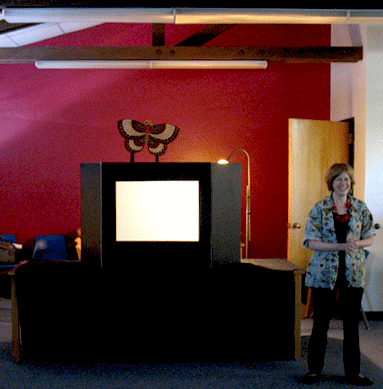
And I was inspired by the beautiful shadow theater that Stuart built for me.
Some people say that, long ago, Wakea and Tonga-iti both claimed to be the father of a little baby. Wakea tried to pull the baby away from Tonga-iti. “The baby is mine!”
But Tonga-iti pulled back, “No, he is mine!” As they fought over the child, the baby split in two!
Wakea took his half baby and patted it and shaped it into a ball, and threw it up into the sky. It was huge and bright and golden and beautiful, and it raced across the sky at top speed.
No one had ever seen such a brilliant sight. Tonga-iti was jealous. He took his baby half and patted it and shaped it into a ball too. Then he too threw it up into the sky! But Tonga-iti had waited too long. The lifeblood and energy of his baby half had drained away, so his ball was silvery white and moved across the sky very, very slowly.
Because the Sun went so fast, and the Moon went so slowly, the nights were long and the days were short. Children didn’t have time to play after school. Men didn’t have time to finish their fishing. Women didn’t have time to dry the kapa cloth they were making. Everyone had to cook in the dark and eat in the dark and tell stories in the dark. 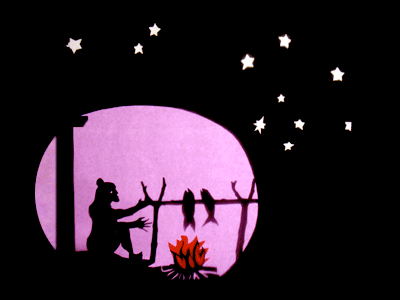
One night when Maui and his brothers were roasting their fish in the dark, Maui said, “I’m tired of having to do everything in the dark. We should catch the Sun and compel it to travel across the sky more slowly.”
“What nonsense, Maui-Topknot! No one can capture the sun!” said one of the brothers.
“Yes, Maui-of-a-Thousand-Names! You’re full of such tall tales!” agreed another brother.
“That’s right, Maui-Usurper, even if our mother does love you the best, that doesn’t make you some kind of hero,” grumbled another brother.
“Go ahead,” said the last brother, “You might even gain a new name: Maui-Burnt-to-a Crisp!”
Maui turned into a bird and flew up into a tree. Then he flew back down and turned back into himself.
“I have brought fire from Mahuika, I have caught the biggest fish in the world and turned it into islands, I have journeyed to the underworld and come back to tell the tale. With the magic jawbone of my ancestor, and especially with your help, I know we can succeed! Why should we be slaves to the Sun?”
After a few more weeks of stumbling around in the dark every day, Maui’s brothers began to think it might be worth a try. But they would need a plan.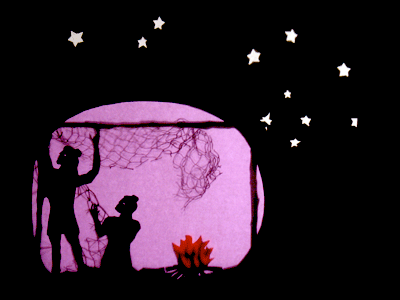
“Maui-Full-of-Tricks, do you have a plan for accomplishing this crazy idea of yours?” the brothers asked him.
“Yes! my brothers, we must gather the entire village and make more fishing nets. And then we must tie all of the nets together into one gigantic net, Then we must go to Haleakala, the House of the Sun, and set the trap. But we must do all of the work in the dark, so the Sun does not suspect what we are up to!”
The brothers agreed, and soon the village was hard at work, braiding new ropes and netting them into one gigantic net! And some people say that this was when the designs for braiding the strongest types of rope were invented. And other people say that Maui-Teller-of-Tales invented the string game that we call cat’s cradle, whose name in Hawaiian means “to snare.”
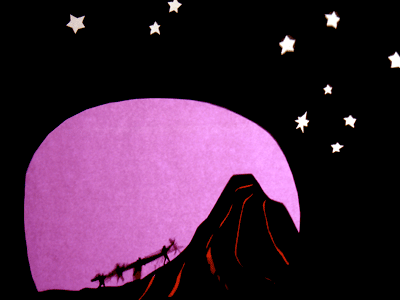 When the gigantic net was finished, Maui and his brothers set out for the tall volcano, Haleakala, whose name means House of the Sun. They traveled at night to escape the notice of the sun. They climbed up the great mountain, carrying the huge net, and then they spread out around the edge of the crater where the Sun slept, and they stretched their net across the deep chasm.
When the gigantic net was finished, Maui and his brothers set out for the tall volcano, Haleakala, whose name means House of the Sun. They traveled at night to escape the notice of the sun. They climbed up the great mountain, carrying the huge net, and then they spread out around the edge of the crater where the Sun slept, and they stretched their net across the deep chasm.
Then they built a rock wall to hide behind for protection from the angry Sun.
The next morning, when the Sun began to rise up out of the crater, they were ready. Exactly according to plan, the Sun became entangled in their net. He sputtered and struggled and crashed from side to side in the chasm, causing rockslides and earthquakes, but the brothers held tightly to their net.
Then, grabbing the magical jawbone of his ancestor, Maui began beating the Sun in the face!
“Who dares to attack Tama-nui-te-rā?” the Sun thundered.
But the Sun had inadvertently granted a special power to Maui: for now Maui knew that the name of the Sun is Tama-nui-te-rā!
“Tama-nui-te-rā!” Maui shouted. “I will release you only if you agree to move more slowly through the sky, blessing my people with longer days.”
“Yes, yes! I will agree to anything!” the Sun raged. “Just free me!” And the Sun began to creep through the sky as slowly as a snail.
At first, Maui and his people reveled in the long, sunny days. But soon they could see that the angry Sun was exacting a terrible revenge. Water holes dried up, trees died, and their crops shriveled and withered.
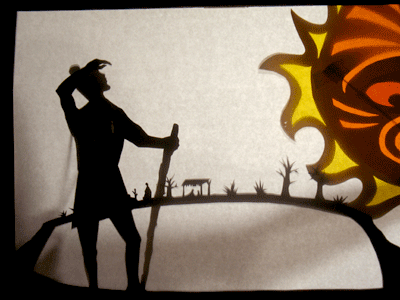 One day, Maui was out working in his dry and dusty field. It was blazingly hot, and he was tired and thirsty. He stood up to wipe his face, and, shielding his face against the glare, he glanced up at the Sun.
One day, Maui was out working in his dry and dusty field. It was blazingly hot, and he was tired and thirsty. He stood up to wipe his face, and, shielding his face against the glare, he glanced up at the Sun.
The Sun was watching. To show off his power, he quickly set, plunging the world back into darkness.
This enraged Maui. “I will fix this problem once and for all!” he vowed.
So Maui took his magical fishhook and hooked the Sun, and then he tied the line to the Moon. Now the Sun can no longer go too fast, nor the Moon too slowly, for one must rise as the other sets.
And all because of Maui-Full-of-Tricks!
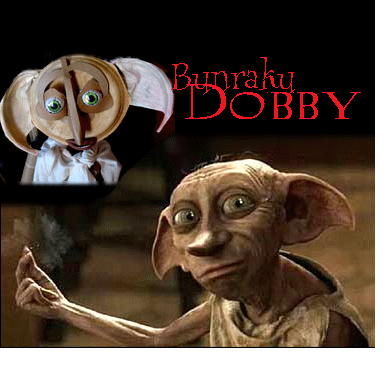 For our One Planet, Many Puppets workshop on rod puppets, I wanted to make a Bunraku style puppet so the kids could try working cooperatively with other puppeteers to bring a puppet to life.
For our One Planet, Many Puppets workshop on rod puppets, I wanted to make a Bunraku style puppet so the kids could try working cooperatively with other puppeteers to bring a puppet to life.
